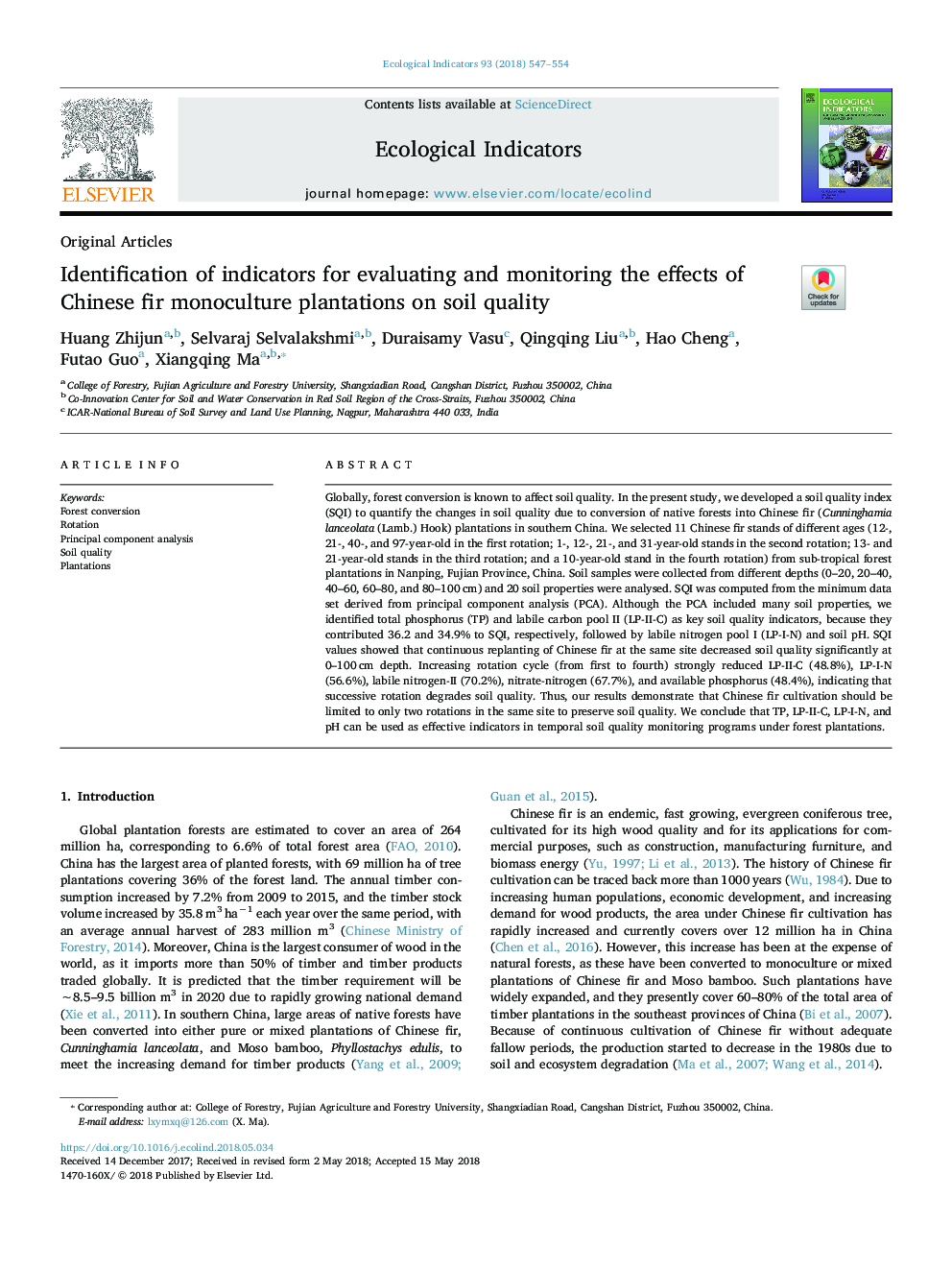| Article ID | Journal | Published Year | Pages | File Type |
|---|---|---|---|---|
| 8845175 | Ecological Indicators | 2018 | 8 Pages |
Abstract
Globally, forest conversion is known to affect soil quality. In the present study, we developed a soil quality index (SQI) to quantify the changes in soil quality due to conversion of native forests into Chinese fir (Cunninghamia lanceolata (Lamb.) Hook) plantations in southern China. We selected 11 Chinese fir stands of different ages (12-, 21-, 40-, and 97-year-old in the first rotation; 1-, 12-, 21-, and 31-year-old stands in the second rotation; 13- and 21-year-old stands in the third rotation; and a 10-year-old stand in the fourth rotation) from sub-tropical forest plantations in Nanping, Fujian Province, China. Soil samples were collected from different depths (0-20, 20-40, 40-60, 60-80, and 80-100â¯cm) and 20 soil properties were analysed. SQI was computed from the minimum data set derived from principal component analysis (PCA). Although the PCA included many soil properties, we identified total phosphorus (TP) and labile carbon pool II (LP-II-C) as key soil quality indicators, because they contributed 36.2 and 34.9% to SQI, respectively, followed by labile nitrogen pool I (LP-I-N) and soil pH. SQI values showed that continuous replanting of Chinese fir at the same site decreased soil quality significantly at 0-100â¯cm depth. Increasing rotation cycle (from first to fourth) strongly reduced LP-II-C (48.8%), LP-I-N (56.6%), labile nitrogen-II (70.2%), nitrate-nitrogen (67.7%), and available phosphorus (48.4%), indicating that successive rotation degrades soil quality. Thus, our results demonstrate that Chinese fir cultivation should be limited to only two rotations in the same site to preserve soil quality. We conclude that TP, LP-II-C, LP-I-N, and pH can be used as effective indicators in temporal soil quality monitoring programs under forest plantations.
Related Topics
Life Sciences
Agricultural and Biological Sciences
Ecology, Evolution, Behavior and Systematics
Authors
Huang Zhijun, Selvaraj Selvalakshmi, Duraisamy Vasu, Qingqing Liu, Hao Cheng, Futao Guo, Xiangqing Ma,
